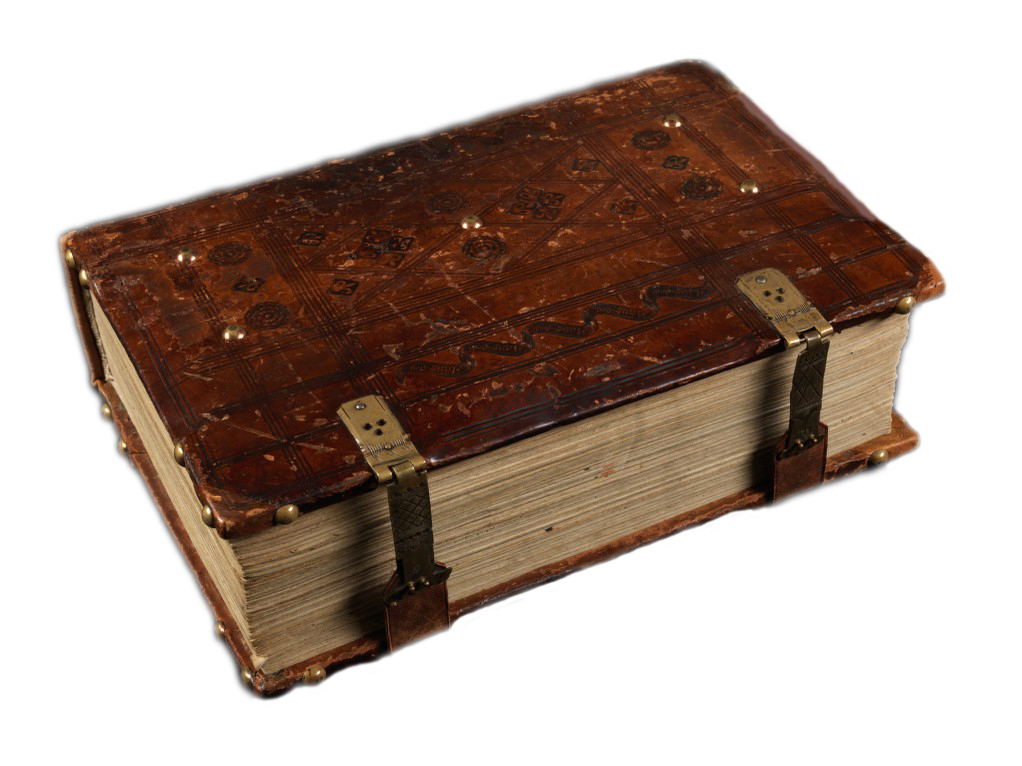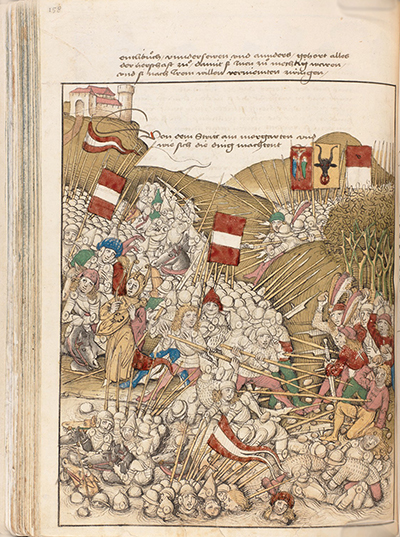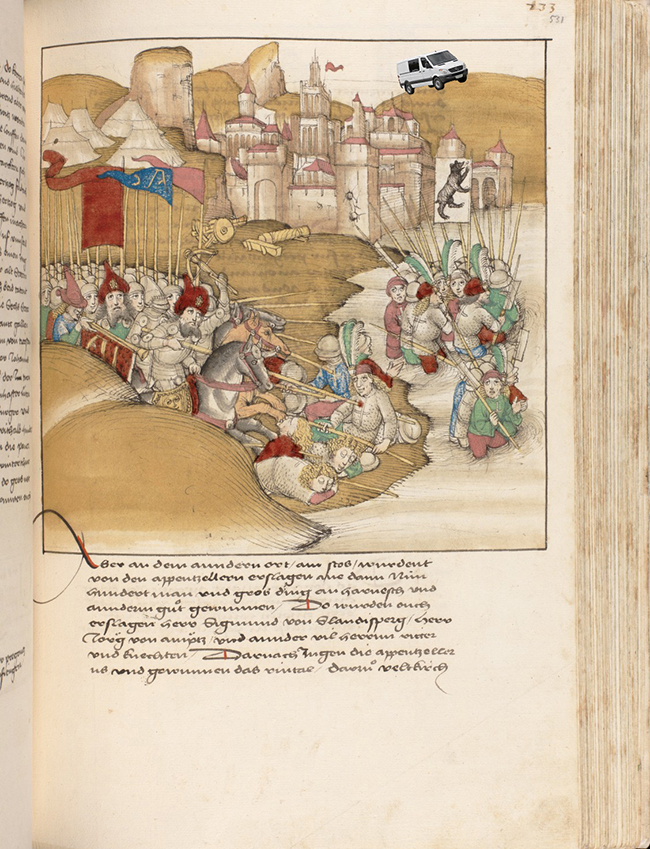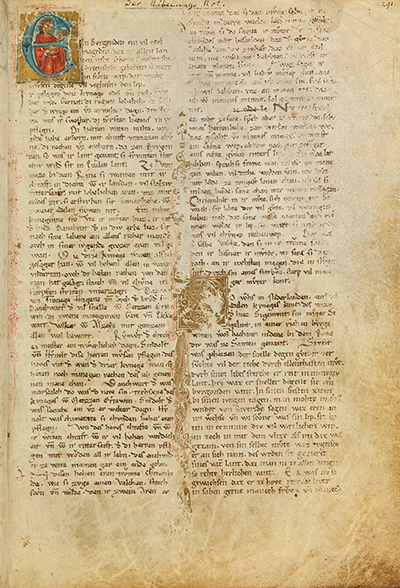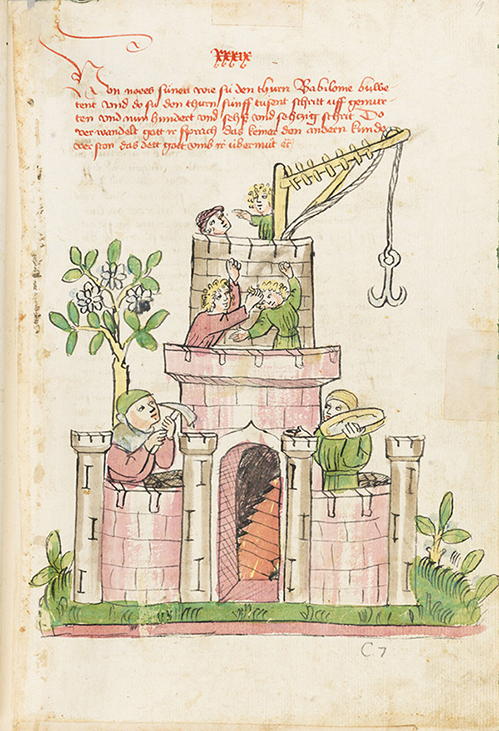— The Scriptorium —
Guildwater News Archive
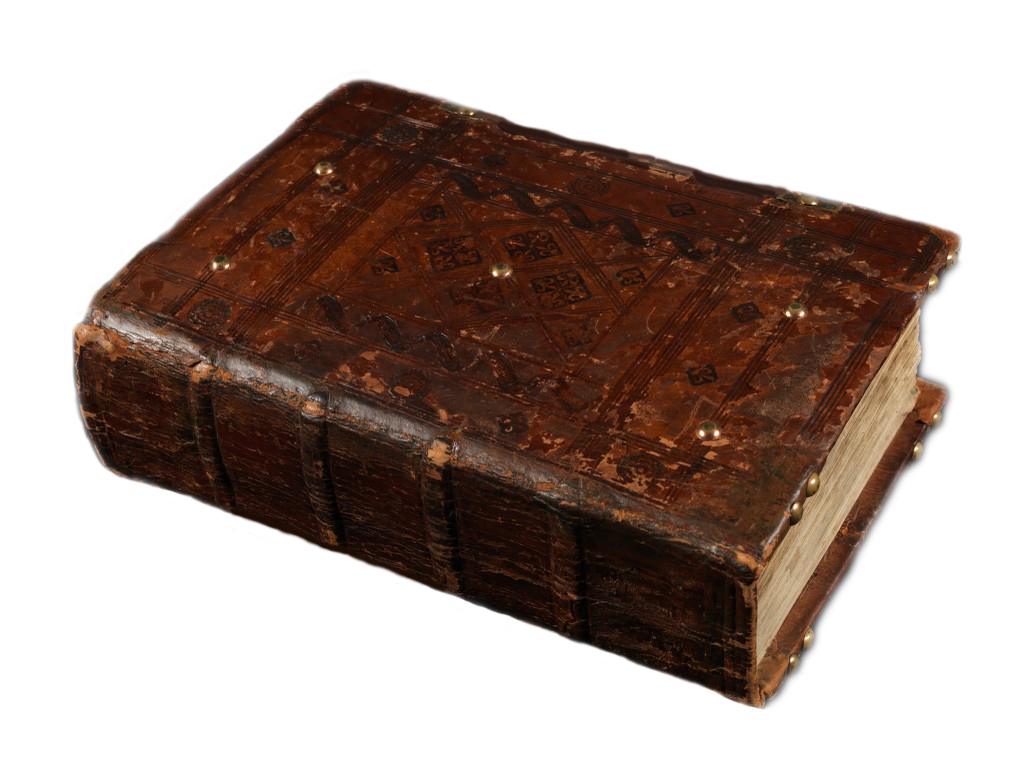
September 30, 2016 (Friday) - Thayer Sarrano visits the municipality of Balgach, in Switzerland. Joined by her stalwart rhythm-section -- Ted Kuhn (bass) and Jason Nazary (drums) -- Thayer plays the Bierhalle Linde, the second of six Swiss dates. Balgach is located in the canton of St. Gallen, a few miles from the Swiss-Austrian border. The Abbey of St. Gallen gave its name to the broader canton, as we mentioned yesterday. Over the centuries, and beginning in the 700s, as the Abbey amassed landholdings (and library holdings), it became the effective government of the region. Despite that, St. Gallen was then, at its highest level, like all of the other areas of what is now modern Switzerland, part of the larger Holy Roman Empire, first established under Charlemagne in 800. When Charlemagne's Carolingian Empire began to buckle under the weight of the Viking invasions of the ninth and tenth centuries, centralized authority, not all that strong to begin with, fractured further. The various regions of the continent of Europe began to go their separate ways -- regionalization. When stronger, more centralized states began to reemerge in the late 1200s and early 1300s, it became more evident that France would not be a part of the resurgent Holy Roman Empire. Imperial rule would also be entrusted for the first time to the Habsburgs of Austria. By that era, other lands of the former Carolingian Empire, besides France, had already begun to develop in their own directions. For instance, in 1291, upon the death of the Holy Roman Emperor Rudolf I, the first Habsburg to wear the imperial crown, there is the first appearance of the Everlasting League, which was to become the nucleus of what is now known as the Old Swiss Confederacy.
Diebold Schilling, Spiezer Chronik (1484)
(Source: Bern, Burgerbibliothek)
The first three members of the Swiss Confederacy were the cantons of Uri, Schwyz, Unterwalden. This did not mean, of course, that the independence-minded cantons always got along -- either internally or one between the other. For example, growing tensions between Schwyz and the neighboring Abbey of Einsiedeln grew so heated that the Habsburgs felt compelled to intervene in the region, entering on the side of the Abbey. The Habsburgs may have been a growing power within the empire in 1315, at least on paper, but their army was resoundingly defeated by Schwyz and its ally Uri at the battle of Morgarten. By the mid-1300s, membership in the Confederation grew beyond the initial three "Forest Cantons," and came to include: Lucerne, Zürich, Glarus, Zug, and Bern. The image above, depicting this Battle of Morgarten (1315), derives from a chronicle written later in the fifteenth century. This Spiezer Chronik is now housed in the Burgerbibliothek of Bern.
The Abbey of St. Gallen and its surrounding areas, including Balgach, were not initially part of the growing Swiss Confederacy, despite their close proximity to its members. By the mid-1400s, however, St. Gallen did become an ally of several Confederates. Just prior to that, St. Gallen had faced internal challenges of its own, not completely unlike the skirmishes between the Abbey of Einsiedeln and Schwyz. Some lands within the broader St. Gallen canton, lands known as the Appenzell, took issue with the manner in which Abbey officials ruled over them in the early 1400s. Rebels of the Appenzell allied with Schwyz and defeated St. Gallen in a battle at Vögelinsegg in 1403, effectively seceding from Abbey control. From there, the Appenzell went into expansionist mode, attempting to claim more territories for itself, ideally with access to Lake Constance. However, at Bregenz, located just inside the borders of modern Austria, some twelve miles from Balgach itself, a battle victory for St. Gallen in 1408 checked the growth of the Appenzell, although the region still remained independent from Abbey rule. The illustration of the Bregenz battle above is also from the Spiezer Chronik, although you may notice that the copy in our Guildwater Scriptorium does differs in minor ways from the one housed in the Burgerbibliothek. As a result of these events in the early 1400s, when Ted Kuhn (bass), Jason Nazary (drums), and Thayer Sarrano (vox / guitar) -- dream grunge ambassadress / Botschafterin -- make their trek today, in late September of the year 2016, from Grabenhalle in the city of St. Gallen, to the Bierhallle Linde in Balgach, they will, in all likelihood, drive around the very edges of the Appenzell (the present-day cantons of Appenzell Innerrhoden and Appenzell Ausserrhoden), situated, like the center of a doughnut, in the very middle of St. Gallen canton lands, without being a part of its constituency. Even at that point, that is, back in the 1400s, and despite the growing number of independence-minded cantons, the Swiss Confederation was still a part of the Holy Roman Empire, even if imperial authority was not (or could not always) be enforced locally. Such matters would change, although it would take another 200 years or so to play out, resulting legally in the Peace of Westphalia of 1648. Well before that, though, the Reformation period would toss religious denominational variety into the Swiss political mix of the cantons.

THAYER SARRANO
(St. Gallen, Switzerland)
September 29, 2016 (Thursday) - Thayer Sarrano arrives in Switzerland, which is better known to us, and even officially listed on our maps as Interstellar Land. Many thanks to the good folks of Interstellar Music for arranging this series of shows (and magazine covers) in Switzerland and beyond. Joined by a pulsing rhythm-section, Ted Kuhn (bass) and Jason Nazary (drums), the Thayer Sarrano Experience plays Grabenhalle in St. Gallen. The city gives its name to the outlying canton, and sits just off the southern shores of Lake Constance. The name is taken from Gallen (or Gall), a missionary monk who arrived in these regions in the early seventh century. Although there is some scholarly debate about his origins, we prefer the version that has Gallen deriving from Ireland, since the largest contingent among our Guildwater scribal brethren, responsible for the writing of these chronicles of the Tour Europa of Thayer Sarrano, is Irish. Following the patterns of early monasticism, prior to the thorough spread of the Rule of St. Benedict, Gallen lived as an eremitic monk -- or hermit -- favoring seclusion to more communal (or coenobitic) forms of monasticism. Not uncommon among the early Desert Fathers of Egypt, or early monasticism on Mt. Athos and even in Ireland, such hermits gravitated towards individual "cells," caves, the wilderness, or the forest. The latter seems to have initially been the case with Gallen. Acquiring a reputation as a holy man and an able sermon-giver, Gallen gained followers -- disciples. Despite this, he refused all offers to hold church office, for example, to become the Bishop of Constance. When he passed away, in his nineties, a church was erected in his honor on the grounds of his dwelling. This small structure became the basis for the present-day Abbey of St. Gallen across the next century.
(Source: St. Gallen, Stiftsbibliothek)
The Abbey of St. Gallen emerges most clearly across the very late Merovingian period or, still more fully, during the early Carolingian dynasty of Pepin the Short (r. 751-768). At that point the communal Benedictine rule was introduced. It was intentionally less ascetic than the eremitic monasticism favored by St. Gallen himself. The Abbey flourished during the age of Charlemagne and Louis the Pious. Charlemagne was coronated as Holy Roman Emperor by Pope Leo III in 800. This was the first incarnation of the Holy Roman Empire, of which the Habsburgs would eventually come to rule a still later reincarnation in the thirteenth and succeeding centuries. Back in the ninth century, Charlemagne's empire encompassed all of modern day France, Belgium, the Netherlands, Switzerland, portions of Germany, Austria, a sliver of northern Spain, and the northern Italian Peninsula. In this Carolingian period, St. Gallen became an exemplar of what a monastic community could be. The Abbey became widely known throughout medieval Europe as a key center of learning, one of the earliest, one of the most important. It boasted esteemed scholars -- Notker the Stammerer, for example, whose writings provide one of the few near contemporary sources that recorded the events of Charlemagne's life and coronation. The output of St. Gallen's scriptorium was prolific, feeding a burgeoning library collection. Its scribes and copyists used the Carolingian minuscule script, which would eventually become one of the bases of modern typeface in the West.
The library of St. Gallen houses one of the greatest collections of medieval manuscripts, especially for works preceding the fifteenth century -- some 1,050. Considering our own recent chronicles, we Guildwater Scribes would like to draw attention to the fact that St. Gallen houses Manuscript B of the Nibelungenlied, which dates from the late 1200s, and is widely considered to be the oldest extant versions of that text. As noted on September 26th, the Nibelungenlied was the source document upon which Richard Wagner created the libretto for his nineteenth-century opera cycle Der Ring des Nibelungen. The image up above is from the Nibelungenlied. Below is a page from the Vadianische Sammlung, which is not found at the Abbey library, but rather that of the canton of St. Gall, demonstrating the abundance of manuscripts concentrated in this area of Switzerland. The Abbey has a rich treasure trove, but no monopoly. The image below depicts world mayhem -- accusing fingers, fisticuffs -- about to erupt one fine day at the Tower of Babel.

(Source: St. Gallen, Kantonsbibliothek)
— Guildwater Archive —
